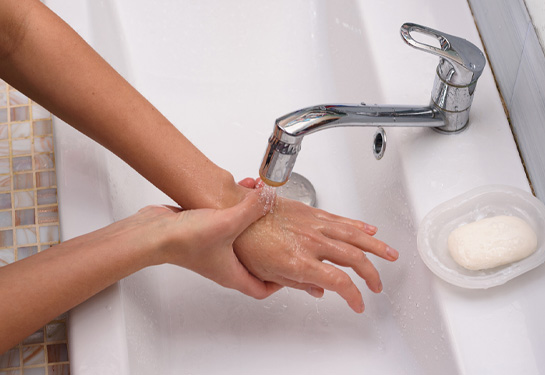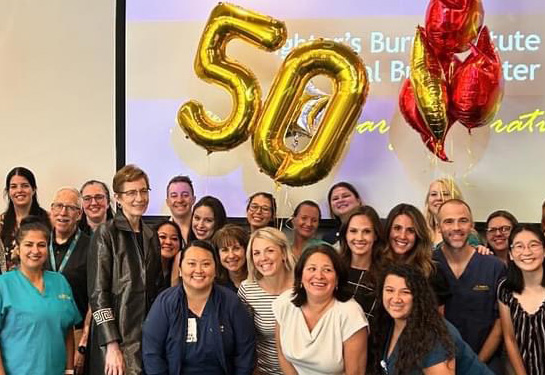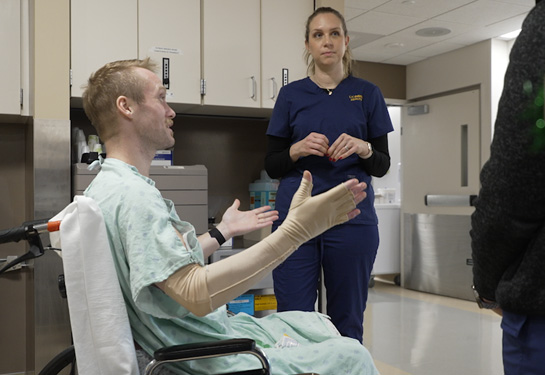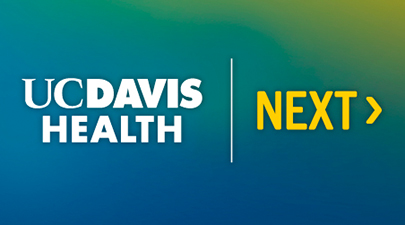Can 20 minutes of cool running water improve burn outcomes?
Team from UC Davis Health, Sacramento Fire and Australia awarded $1.49 million Department of Defense grant to find out
Burn injuries require prompt, effective first aid to minimize their impact. Emerging research shows improved outcomes for patients when cool running water is applied to a burn for 20 minutes within three hours of the injury.
Experts from UC Davis Health, Griffith University in Queensland, Australia, and the Sacramento Fire Department will test the effectiveness of this method, thanks to a $1.49 million grant from the U.S. Department of Defense.
Immediately applying cool running water is believed to mitigate the severity of the injury by dissipating thermal energy, stabilizing blood vessels, reducing the release of pro-inflammatory chemicals and influencing cellular responses.
“It’s a high-value, low-cost way to minimize complications from burn injuries. And, while well known in Australia, it hasn’t been adopted as a best practice by U.S. pre-hospital and Emergency Medicine Services (EMS),” said Bronwyn Griffin. Griffin is an associate professor with the School of Nursing and Midwifery at Griffith University and one of the study’s principal investigators.
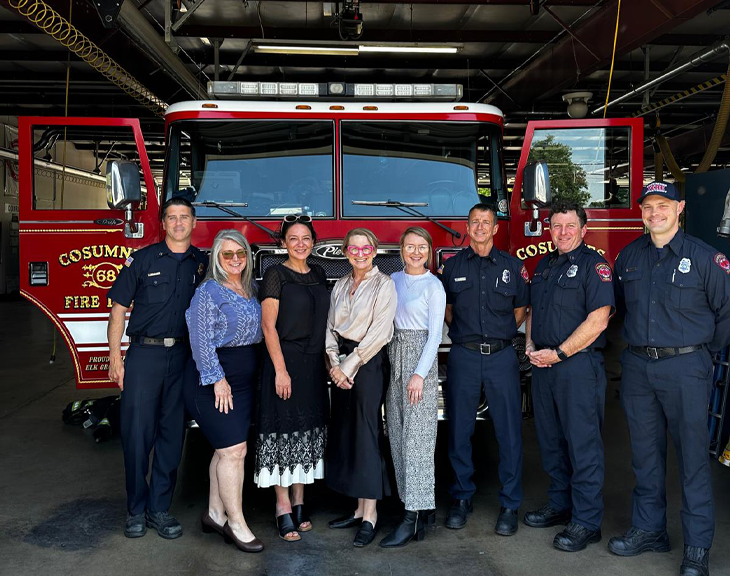
The Department of Defense's Military Burn Research Award is granted to translational research focused on evidence-based first aid in pre-hospital environments, which locations at which emergency medical care is administered to a patient prior to the patient's arrival at a hospital.
Griffin said the shared passion for research-integrated clinical practice between Roy Kimble, director of paediatric surgery, urology, burns and trauma at the Queensland Children’s Hospital and Tina Palmieri, UC Davis Health chief of burn surgery, made the collaboration a natural fit.
Last week, the research team met in Sacramento to collaborate with burn care providers, emergency clinicians, firefighters, EMS dispatch and civilian first responders. Others on the team include:
- John Rose, emergency medicine physician and EMS medical director for UC Davis Medical Center
- Sonia Singh, pediatric emergency medicine physician, UC Davis Children’s Hospital
- Tina Palmieri, chief of burn surgery, Firefighters Burn Institute Regional Burn Center at UC Davis
- Nathan Kuppermann, chief, UC Davis Department of Emergency Medicine
- Kevin Mackey, medical director, Sacramento Fire Department
Three-hour window to treat burn injury with cool water
Applying running water to a burn injury for 20 minutes within the first three hours speeds up healing. The team will share this best practice knowledge with first responders, the public and emergency clinicians in Sacramento County.

“There is a three-hour window of opportunity to deliver first aid. This can have a significant impact on patient outcomes. This intervention decreases the depth of the burn, need for skin grafting, hospital admissions and number of surgeries,” said Rose, one of the principal investigators on the study.
“After the roll-out of these strategies, we will determine whether patients who received the treatment after the implementation had improved outcomes compared to patients who suffered burns prior to the implementation,” Palmieri added.
Griffin said cool running water is simple enough to be given by people without formal medical training and could be provided by non-medical first responders before the arrival of EMS.
The UC Davis burn center is located in Northern California’s wildfire area and treats hundreds of burn victims every year. The environment in Australia is similarly affected by wildfires. The running water approach is ideal in prolonged field-care scenarios where access to a hospital may be delayed, such as military combat situations, rural regions or natural disaster events.
“This collaboration brings forth an incredible opportunity to translate Australian burn first aid research findings into practical applications in Northern California. Lessons learned in these scenarios will be directly translated for the U.S. Department of Defense,” Griffin said. “We believe this opportunity is critical for transforming burn first-aid treatment nationally and achieving substantial improvements in patient outcomes.”
More about the intervention and existing evidence can be found at the team’s website.

